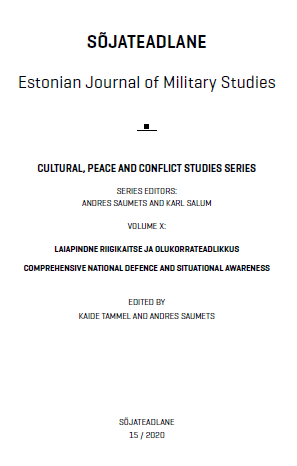ELUTÄHTSATE TEENUSTE RISTSÕLTUVUSTE ANALÜÜS
CROSS-DEPENDENCY ANALYSIS OF LIFE-CRITICAL SERVICES
Author(s): Peeter Laud, Hayretdin BAHŞI, Aleksandr Lenin, Kalev MÄNDMAA, Jaan PRIISALU, Reedik TUULINGSubject(s): Security and defense, Military policy, Methodology and research technology
Published by: Kaitseväe Akadeemia (KVA)
Keywords: life-critical services; cross-dependencies; modelling; simulation;
Summary/Abstract: Awareness of undesirable events happening in the country, and of their consequences is a major part of the comprehensive national defense approach. Knowing and forecasting the status of life-critical services is part of this awareness. A drop in the supply of one of the services may have far-reaching effects, and so may a surge in demand. This paper reports on our work in formalizing the dependencies between the supply and demand of services in the Estonian context. Our formalization depends on a suitable metamodel, i.e. a formal language for expressing the dependencies. The language has to be sufficiently expressive to capture the essential types of dependencies, but not overly expressive, as this would hinder the analysis. We have performed a review of the attributes of services and dependencies referred to in relevant literature, and have concluded that despite the richness in their structure, only the level of rendered services (expressed numerically), their changes in time, and their dependencies on the current and past levels of other services should be included in the metamodel. More complex services, e.g. the provision of electrical power, whose level cannot be expressed as a single number, should be characterized by a tuple of numbers (e.g. the availability of power at each substation). In addition to the characteristics of the services, the metamodel allows the description of environmental events, using the same formalism. The examples of such events are weather conditions, as well as drops in the levels of external services, all characterized by their time of occurrence and duration. Given this ability to model the effects of external events, we can construct scenarios and run simulations to find out how well the infrastructure (according to our model) copes with such events in such sequence.
Journal: Sõjateadlane
- Issue Year: 2020
- Issue No: 15
- Page Range: 207-237
- Page Count: 31
- Language: Estonian

